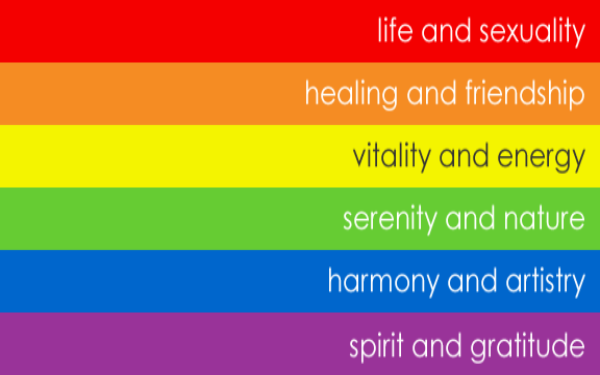
Gay interracial refers to relationships or attractions between individuals of different races who identify as part of the LGBTQ+ community. It is a term that highlights the intersectionality of race and sexuality, and the unique challenges and experiences faced by individuals who belong to both marginalized communities. Interracial relationships have been stigmatized and discriminated against in many societies, and this has been especially true for LGBTQ+ individuals. However, the increasing visibility and acceptance of diverse sexual orientations and racial identities have led to greater representation and celebration of gay interracial relationships in media and popular culture.
The Beauty and Challenges of Gay Interracial Relationships
Gay interracial relationships are romantic or sexual relationships between two people of different races or ethnicities who identify as being LGBT. In the past, homosexuality was often associated with same-race couple, but today there is a growing acceptance of interracial couples in society. With this increased acceptance, more and more couples are publicly expressing their sexuality in a bid to show solidarity and make strong statements about cultural diversity and tolerance.
Gay interracial couples come from all different backgrounds and cultures, which makes for amazing engagement stories and experiences. For some, being in an interracial same-sex relationship can be an act of activism that helps to challenge outdated values by challenging stereotypes of how love should look.
Interracial gay couples assert their right to express love regardless of the color of their skin or the gender they identify with, leading to beautiful bonds that often come with unique challenges depending on the cultural context. Nevertheless, these pairs prove that true love knows no bounds—love is just love!
History of Interracial Relationships in the LGBT Community
The history of interracial relationships in the LGBT community is a complex and often overlooked aspect of LGBTQ+ history. Throughout history, same-sex relationships have often been stigmatized and marginalized, and this has been compounded for individuals in interracial relationships.
Despite these challenges, interracial relationships have always existed within the LGBTQ+ community. In the 19th and early 20th centuries, for example, same-sex relationships between people of different races were often hidden from society due to the fear of persecution and discrimination. However, as society became more accepting of LGBTQ+ individuals and interracial relationships, these relationships began to be more visible.
The 1960s and 1970s saw a significant shift in attitudes towards interracial relationships in the LGBTQ+ community. As the Civil Rights Movement gained momentum, many LGBTQ+ activists began to see the struggle for LGBTQ+ rights as interconnected with the struggle for racial equality. This led to increased acceptance of interracial relationships within the community, and many LGBTQ+ individuals began to form interracial relationships more openly.
Today, interracial relationships are increasingly visible and accepted within the LGBTQ+ community. However, there is still work to be done to combat racism and discrimination within the community and society at large. Understanding the history of interracial relationships in the LGBTQ+ community is an important step towards building a more inclusive and equitable future.
Benefits of Interracial Connections
Interracial connections, including those between gay individuals, can provide a range of benefits. One of the most significant benefits is the opportunity to learn and grow from different perspectives and experiences. Interracial connections can help individuals to broaden their horizons and gain a deeper understanding of different cultures, traditions, and ways of life.
Interracial connections can also foster greater empathy and compassion. When individuals connect with people from different racial backgrounds, they gain a better understanding of the challenges and obstacles that others face. This can help to break down prejudices and stereotypes and promote greater acceptance and understanding.
Another benefit of interracial connections is the opportunity to build strong and lasting relationships. By connecting with individuals from different racial backgrounds, gay individuals can form meaningful and fulfilling relationships that are based on mutual respect, understanding, and shared experiences.
Overall, interracial connections can help to promote greater diversity, acceptance, and understanding in society. By celebrating our differences and embracing our similarities, we can build a more inclusive and vibrant community for all.
Challenges of Being in an Interracial Relationship
One of the challenges of being in an interracial relationship is dealing with societal prejudices and discrimination. Unfortunately, some people still hold onto outdated beliefs and stereotypes about different races and cultures. This can lead to hurtful comments, stares, and even harassment when you are out in public with your partner.
It can also be difficult when family members or friends disapprove of your relationship because of the racial differences. This can lead to tension and conflict within your personal relationships and may require difficult conversations and boundary-setting.
Another challenge is navigating cultural differences and expectations. Each race and culture has its own unique traditions, customs, and values that may differ from your own. This can lead to misunderstandings or conflicts if you are not willing to learn and understand each other's cultural backgrounds.
Overall, being in an interracial relationship can be a rewarding and enriching experience, but it does come with its own set of challenges that both partners must be willing to navigate together. Communication, understanding, and respect are key to overcoming these challenges and building a strong, loving relationship.
How Black People Feel About Gay Interracial Couples
Being in an interracial relationship can come with its own set of challenges, regardless of sexual orientation. However, when it comes to gay interracial relationships, there are some unique challenges that couples may face.
One of the biggest challenges can be dealing with discrimination and prejudice from others. Unfortunately, not everyone is accepting of interracial relationships, and this can be especially true in certain areas or communities. Couples may face stares, comments, or even harassment from strangers or acquaintances who disapprove of their relationship.
Another challenge can be navigating cultural differences. Depending on the backgrounds of the individuals in the relationship, there may be differences in language, religion, food, or customs that can create misunderstandings or conflicts. It's important for both partners to be open and willing to learn about each other's cultures and to find ways to honor and respect those differences.
Communication can also be a challenge in any relationship, but it can be even more important in an interracial relationship. Partners should be willing to talk openly and honestly about their feelings, experiences, and any issues that arise. It's important to avoid assumptions or stereotypes and to listen with an open mind and heart.
Ultimately, being in a gay interracial relationship can be incredibly rewarding, as it allows two people to come together and learn from each other's differences. However, it's important to be aware of the challenges and to work together to overcome them.







